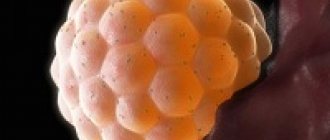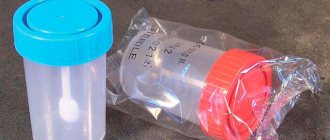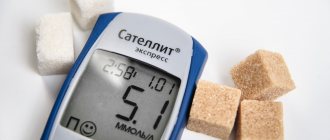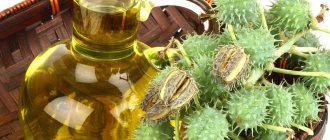Coprogram is a comprehensive analysis of feces, which allows you to evaluate the functioning of the digestive system as a whole, and the functionality of each organ separately. In order for the research results to be accurate, it is necessary to adhere to certain rules for the preparation, collection and storage of material.
General analysis (coprogram)
- 2 days before collecting biomaterial, discard tomatoes, tomato juice, pasta, beets, blueberries, pomegranates and other vegetables and fruits containing dyes.
- For 3 days, stop taking antibiotics, laxatives, and drugs that cause changes in intestinal motor function. Do not use rectal suppositories, ointments, or oils.
- Do not eat exotic fruits, vegetables and foods that are not typical for your diet as a whole. Do not overeat, exclude fatty, spicy, pickled foods.
- If you are taking medications containing iron and bismuth, they must be discontinued 2 days before stool collection.
Attention. After radiography with a contrast agent (barium), collect feces for coprogram no earlier than 7–10 days after the examination. Women are not recommended to take the test during menstruation.
Procedure for collecting stool:
Collect stool for examination in the morning, on an empty stomach. If this is difficult, you can prepare the sample in advance, but no more than 8 hours before submitting it to the laboratory. In this case, store the sample in the refrigerator (do not freeze!).
- Carry out hygiene procedures and first urinate in the toilet and flush.
- Place sterile paper (or an ironed sheet) or a disposable plastic plate in the bowl or bottom of the toilet and perform a bowel movement.
- Collect feces immediately after defecation from different places in a single portion with a special spoon mounted in the lid of a plastic container in a volume of 1–2 g (no more than 1/3 of the container’s volume). Avoid contact with urine and pieces of undigested food.
- Deliver the sample to the laboratory on the day of collection. Before delivering the sample to the laboratory, the container with stool should be kept in the refrigerator at 2–4 °C. Storage at 2-8 °C is allowed - up to 72 hours.
Kinds
There are several types of steatorrhea:
- Intestinal. In this case, the mucous membrane is unable to fully absorb triglycerides, so they leave the body along with the feces.
- A food type that occurs due to consumption of large amounts of fatty foods. The intestines cannot cope with digesting such amounts of fat and try to get rid of them naturally. Also, food pathology can develop as a result of acute poisoning with products with high levels of triglycerides.
- Pancreatic view. The occurrence of the disease is the result of a malfunction of the pancreas. As a result, the body stops producing enough enzymes called lipases, which help break down triglycerides.
The disease occurs in several forms:
- With a high content of neutral fat in the stool, which does not mean the development of serious pathology.
- With the presence of fatty acid in the stool.
- A form in which the symptoms of the first two types of disease are combined.
Dysbacteriosis, intestinal group
To obtain the correct result, material for research is taken before the start of antibacterial therapy or in the intervals between courses of treatment, but not earlier than 2 weeks after its completion.
Attention Do not collect feces from diapers. For infants, collect material from a sterile diaper or pre-ironed onesies. If liquid feces are collected, it can be collected by placing an oilcloth under the baby.
Collection rules
- Feces should be collected in the morning, on an empty stomach.
- Carry out hygiene procedures and first urinate in the toilet and flush.
- Place sterile paper (or an ironed sheet) or a disposable plastic plate in the bowl or bottom of the toilet and perform a bowel movement.
- Collect feces immediately after defecation from different places in a single portion with a special spoon mounted in the lid of a plastic container in a volume of 1–2 g (no more than 1/3 of the container’s volume). Avoid contact with urine and pieces of undigested food.
- Deliver to the laboratory on the day of collection.
The sample can be stored for no more than 2 hours at room temperature; no more than 6 hours at 2-8 °C, more than 6 hours - frozen.
Norms
Macroscopic examination
| Parameter | Norm |
| Quantity | A healthy person produces an average of 100-200 g of feces per day. Normally, feces contain about 80% water and 20% dry matter. With a vegetarian diet, the amount of feces can reach 400-500 g per day; when using easily digestible food, the amount of feces decreases. |
| Consistency | Normally, formed feces have a dense consistency. Pasty feces can occur normally and are caused by the intake of predominantly plant foods. |
| Form | Normally cylindrical. |
| Smell | Normally, stool has a mild odor, which is called fecal (ordinary). It may intensify with the predominance of meat products in the diet, with putrefactive dyspepsia and weaken with a dairy-vegetable diet, constipation. |
| Color | Normally, stool is brown in color. When eating dairy foods, stool turns yellowish-brown, and meat stool turns dark brown. Ingestion of plant foods and some medications can change the color of stool (beets - reddish; blueberries, blackcurrants, blackberries, coffee, cocoa - dark brown; bismuth, iron color stool black). |
| Slime | Normally absent (or in scanty quantities). |
| Blood | Normally absent. |
| Pus | Normally absent. |
| Leftover undigested food (lientorrhea) | Normally none. |
Chemical research
| Parameter | Norm |
| Fecal reaction | Normally neutral, less often slightly alkaline or slightly acidic. Protein nutrition causes a shift in the reaction towards the alkaline side, while carbohydrate nutrition causes the reaction to shift towards the acidic side. |
| Reaction to blood (Gregersen reaction) | Normally negative |
| Reaction to stercobilin | Normally positive. |
| Reaction to bilirubin | Normally negative. |
| Vishnyakov-Triboulet reaction (for soluble protein) | Normally negative. |
Microscopic examination
| Parameter | Norm |
| Muscle fibers | Normally absent or single in the field of view. |
| Connective tissue (remnants of undigested vessels, ligaments, fascia, cartilage) | Normally absent. |
| Fat is neutral. Fatty acid. Salts of fatty acids (soaps). | Normally there are no or scanty amounts of fatty acid salts. |
| Plant fiber | Normally, there are single cells in the p/z. |
| Starch | Normally absent (or single starch cells). |
| Iodophilic microflora (clostridia) | Normally, single in rare areas (normally, iodophilic flora lives in the ileocecal region of the large intestine). |
| Epithelium | Normally, there are no or single columnar epithelial cells in the p/z. |
| Leukocytes | Normally, there are no or single neutrophils in the p/z. |
| Red blood cells | Normally none. |
| Worm eggs | Normally none. |
| Pathogenic protozoa | Normally none. |
| Yeast cells | Normally none. |
| Calcium oxalate (oxalic lime crystals) | Normally none. |
| Triple phosphate crystals (ammonium phosphate-magnesia) | Normally none. |
Protozoa and helminth eggs
To obtain the most reliable results, three stool examinations are recommended with an interval of 3–7 days.
Attention You cannot collect stool earlier than 3 days after an enema, an X-ray examination of the stomach and intestines, or a colonoscopy. The day before, do not take laxatives and drugs that affect intestinal motility (belladonna, pilocarpine), activated carbon, iron, copper, bismuth, barium sulfate, use fat-based rectal suppositories. Women should not collect stool during menstruation.
Collection rules
- Feces should be collected in the morning, on an empty stomach. If this is difficult, you can prepare the sample in advance, but no more than 8 hours before submitting it to the laboratory. In this case, the sample should be stored in the refrigerator (do not freeze!).
- Carry out hygiene procedures and first urinate in the toilet and flush.
- Place sterile paper (or an ironed sheet) or a disposable plastic plate in the bowl or bottom of the toilet and perform a bowel movement.
- Collect feces immediately after defecation from different places in a single portion with a special spoon mounted in the lid of a plastic container in a volume of 1–2 g (no more than 1/3 of the container’s volume). Avoid contact with urine, water and pieces of undigested food;
- Deliver to the laboratory on the day of collection.
Features of steatorrhea in children
The presence of fat in a child’s stool is most often a consequence of a lack of pancreatic enzymes and the immaturity of the enzyme system.
Enzymes involved in the lipid metabolism of a newborn begin to be produced in sufficient quantities only by three months, which leads to inadequate digestion of fats. Also, steatorrhea in infants can be caused by poor liver function caused by genetic disorders, which can be structural and metabolic in nature. In weakened infants, metabolism is restored only by 4-5 months of life.
With proper therapy, signs of steatorrhea in infants can be smoothed out until they disappear completely.
Vitamin E is one of the most powerful antioxidants, vitamin D regulates the absorption of calcium in the intestines, and vitamin K is a blood clotting factor, so even their hidden deficiency must be corrected.
Bacteriology
To obtain a reliable result, material for research is taken before the start of antibacterial therapy or in the intervals between courses of treatment, but not earlier than 2 weeks after its completion.
- 3-4 days before the study, it is necessary to stop taking laxatives, castor and petroleum jelly and stop administering rectal suppositories.
Attention: Feces obtained after an enema, as well as after taking barium (during an X-ray examination), are not suitable for research.
Collection rules
- Feces should be collected in the morning, on an empty stomach.
- Carry out hygiene procedures and first urinate in the toilet and flush.
- Place sterile paper (or an ironed sheet) or a disposable plastic plate in the bowl or bottom of the toilet and perform a bowel movement.
- Collect feces immediately after defecation from different places in a single portion with a special spoon mounted in the lid of a plastic container in a volume of 1–2 g (no more than 1/3 of the container’s volume). Avoid contact with urine and pieces of undigested food.
- Deliver to the laboratory on the day of collection.
Decoding the results of scatological research
When the results are ready, the person will receive a form indicating normal indicators and the results obtained from the study of the material. It is better to consult a doctor for a decoding, since even a deviation from the norm of several indicators does not always indicate the presence of pathologies.
Normally, an adult's feces should be uniformly brown in color, dense, and have a characteristic odor.
The feces of a healthy person are free of foreign impurities, food debris, protozoa and parasite eggs. The presence of undigested fiber in the stool indicates low acidity of gastric juice, the presence of blood and pus indicates serious gastrointestinal pathologies.
PCR studies
Collection rules
- Feces should be collected in the morning, on an empty stomach.
- Carry out hygiene procedures and first urinate in the toilet and flush.
- Place sterile paper (or an ironed sheet) or a disposable plastic plate in the bowl or bottom of the toilet and perform a bowel movement.
- Collect feces immediately after defecation from different places in a single portion with a special spoon mounted in the lid of a plastic container in a volume of 1–2 g (no more than 1/3 of the container’s volume). Avoid contact with urine and pieces of undigested food.
- Deliver to the laboratory on the day of collection.
What else is prescribed with this study?
Indirect bilirubin (direct bilirubin, total bilirubin)
1.36. Ven. blood 1 day
520 ₽ Add to cart
Biochemistry 13 indicators
28.339. Ven. blood 1 day
3,490 ₽ Add to cart
Clinical blood test with leukocyte count and ESR (with microscopy of a blood smear to detect pathological changes) (venous blood)
3.9.1. Ven. blood 1 day
720 ₽ Add to cart
Culture for microflora and sensitivity to antibiotics
3-4 days before the study, it is necessary to stop taking laxatives, castor and vaseline oil, and stop administering rectal suppositories. Feces obtained after an enema, as well as after taking barium (during X-ray examination) are not accepted for examination!
Attention: Feces are collected before starting treatment with antibacterial and chemotherapy drugs.
Collection rules
- First urinate in the toilet and flush.
- Place sterile paper (or an ironed sheet) or a disposable plastic plate in the bowl or bottom of the toilet and perform a bowel movement.
- Collect feces immediately after defecation from different places in a single portion with a special spoon mounted in the lid of a plastic container in a volume of 1–2 g (no more than 1/3 of the container’s volume). Avoid contact with urine and pieces of undigested food.
- Deliver to the laboratory on the day of collection. If it is impossible to quickly deliver the sample to the laboratory, you can store it in the refrigerator for no more than 4 hours at 2-8 °C.
Indications for taking a coprogram
A stool test should be taken as part of an annual preventive examination in order to recognize problems with the digestive tract in time and begin treatment.
When is scatology prescribed:
- inflammation of the digestive system in acute and chronic form;
- hemorrhoids, fissures in the anus, chronic constipation;
- cirrhosis of the liver;
- irritable bowel syndrome;
- neoplasms in the gastrointestinal tract;
- poisoning;
- suspicion of helminthic infestation, amoebic dysentery;
- assessment of the effectiveness of drug treatment;
- before conducting instrumental diagnostics of the gastrointestinal tract and surgical interventions.
Children are prescribed a stool test for colic, if there is a suspicion of intestinal infections, inflammatory processes, cystic fibrosis, lactose intolerance, dysbacteriosis, or infection with worms.
For carbohydrates
- Carry out hygiene procedures and first urinate in the toilet and flush.
- Place sterile paper (or an ironed sheet) or a disposable plastic plate in the bowl or bottom of the toilet and perform a bowel movement.
- Collect feces immediately after defecation from different places in a single portion with a special spoon mounted in the lid of a plastic container in a volume of 1–2 g (no more than 1/3 of the container’s volume). Avoid contact with urine and pieces of undigested food.
- Deliver the sample to the laboratory within 4 hours.
Attention Storing a stool sample for more than 4 hours, including in the refrigerator, is not allowed.
References
- Azer, S., Sankararaman, S. Steatorrhea. Treasure Island (FL): StatPearls Publishing, 2021.
- Bijoor, A., Geetha, S., Venkatesh, T. Faecal fat content in healthy adults by the 'acid steatocrit method'. Indian J Clin Biochem., 2004. - Vol. 19(2). - P. 20-2.
- Kamath, M., Pai, C., Kamath, A. et al. Comparing acid steatocrit and faecal elastase estimations for use in M-ANNHEIM staging for pancreatitis. World J Gastroenterol. — 2021. — Vol. 23(12). - P. 2217-2222.
Symptoms of steatorrhea
Long-term removal of fats from the body along with feces affects the condition of all systems and organs.
The main symptoms are frequent urge to defecate, diarrhea with copious loose stools. Constant diarrhea leads to dehydration of the body, with all its inherent signs (dry skin, constant thirst, etc.). Feces have an oily consistency, are greasy, and are difficult to wash off with water. These symptoms include nausea, heartburn, belching, bloating and rumbling in the intestines, and dry cough. Less commonly, pain appears in the upper abdomen.
Steatorrhea is accompanied by diarrhea, frequent bowel movements, and dyspepsia
In the absence of timely adequate treatment for the disease that caused steatorrhea, disorders of the cardiovascular, endocrine, genitourinary and nervous systems may develop, which is caused by a secondary disorder of protein metabolism. A decrease in protein content occurs for several reasons: cavity digestion and protein absorption are impaired. Also, with malabsorption, the permeability of the intestinal barrier often increases and protein excretion occurs with loss through the intestines.
Compliance with the rules of preparation and collection technique affects the reliability of the lipid profile result.
Moderate protein losses occur with malabsorption of any origin. In this case, the patient complains of general weakness and decreased performance. Protein metabolism disorders lead to a progressive decrease in body weight, a decrease in the amount of total protein and albumin, ascites, and hypoproteinemic (protein-free) edema.
Steatorrhea is also accompanied by vitamin deficiency. The development of hypovitaminosis is explained by impaired absorption in the intestines, as well as the property of a number of vitamins to be absorbed only in the presence of fats. Severe malabsorption is accompanied by impaired metabolism of almost all vitamins, but clinically pronounced hypovitaminosis appears quite late. Deficiency of B vitamins appears earlier than others. The absorption of fat-soluble vitamins - A, D, E, K - is significantly impaired. These vitamins normally have the same absorption mechanisms as triglycerides. Their absorption changes with the inferiority of the bile micelle (chronic biliary insufficiency, dysbiosis), increased hydrostatic pressure in the intestinal lymphatic system (Whipple's disease), and impaired metabolism of enterocytes.
Hypovitaminosis can have the following manifestations:
- dizziness;
- pain in the spine and joints;
- convulsive conditions;
- swelling;
- dryness and pallor of the mucous membranes;
- skin itching;
- decreased visual acuity;
- dullness and brittleness of hair, peeling nails;
- glossitis, stomatitis (including angular), looseness and bleeding of the gums.
Absorption of fat-soluble vitamins occurs predominantly in the small intestine, therefore, in pathological conditions accompanied by atrophy of the mucous membrane of the small intestine, the process of their assimilation is disrupted. At the same time, the presence of pancreatic lipase for the absorption of this group of vitamins is not necessary, therefore, with pancreatic insufficiency, there is usually no vitamin deficiency.
In the absence of timely adequate treatment for the disease that caused steatorrhea, disorders of the cardiovascular, endocrine, genitourinary and nervous systems may develop, which is caused by a secondary disorder of protein metabolism.
Despite the absence of specific symptoms of hypovitaminosis, one must keep in mind that vitamin E is one of the most powerful antioxidants, vitamin D regulates the absorption of calcium in the intestines, and vitamin K is a blood clotting factor, so even their hidden deficiency must be corrected.
Treatment
Treatment of steatorrhea consists of eliminating the causes of insufficient absorption of fatty acids by the body, as well as correcting impaired metabolism. Drug therapy includes taking medications whose action is aimed at eliminating the consequences of steatorrhea: enzyme preparations with an increased content of lipases, antacids to neutralize gastric acid, cortisone, hydrochloric acid, vitamin complexes containing vitamins c. B, ascorbic and nicotinic acids, fat-soluble vitamins A, D, E and K.
An important condition for the treatment of steatorrhea is diet
Therapy also includes correction of diet and nutrition. It is recommended to eat small meals with a three-hour interval between meals, the weight of one serving should not exceed 200 g, and the daily amount of fat consumed should be 50–65 g. It is necessary to exclude fatty, fried and spicy foods, alcohol, and sweet carbonated drinks from the diet. Reduce carbohydrate intake. Preference should be given to dishes made from lean meats, lean fish, fermented milk products, low-fat cottage cheese, and fresh vegetables.
Video from YouTube on the topic of the article:







